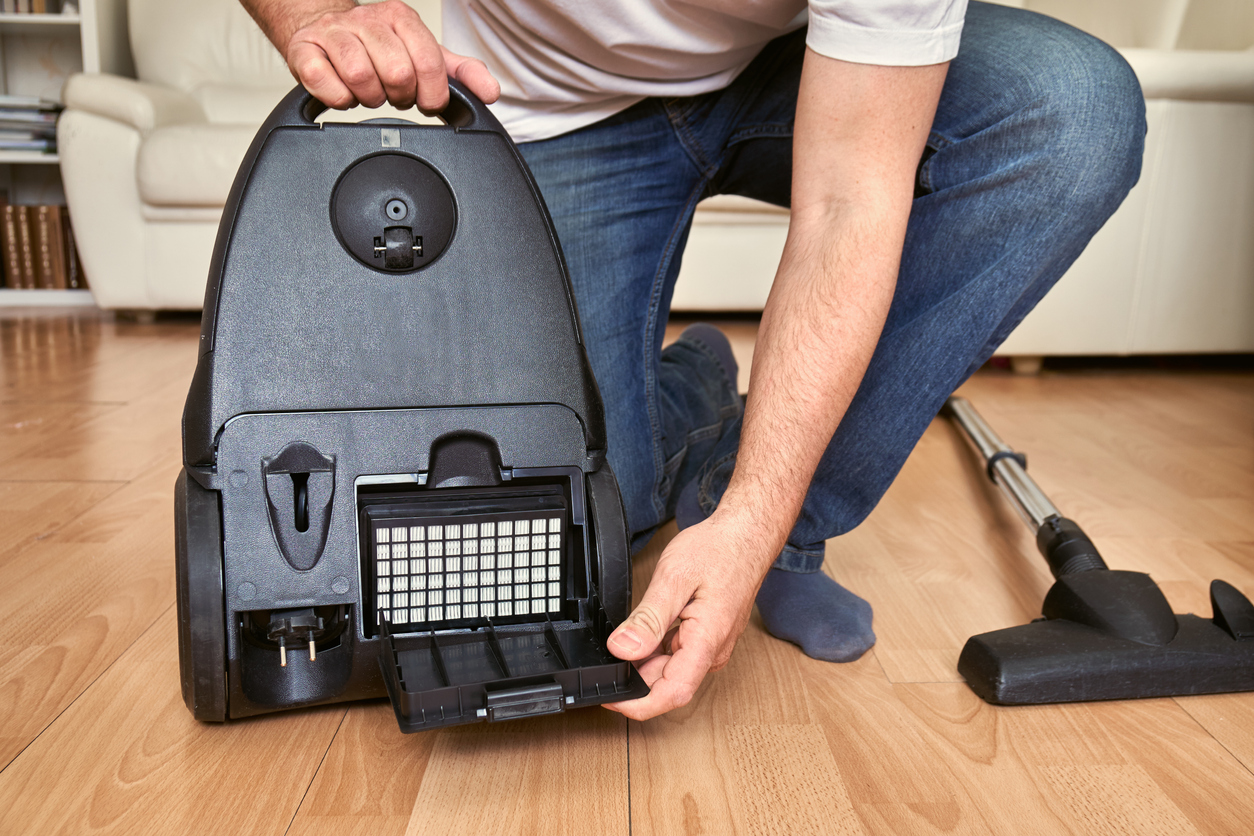Every homeowner wants to keep their homes clean, neat and tidy, but honestly, I don’t think that’s possible without a vacuum cleaner.
Today, a vacuum cleaner is worth more than what you can imagine. Try not to use it for one week and you’ll tell me about the accumulation of dust and debris in your house.
But, what happens when your vacuum cleaner has lost suction or has some other problems? Can you just toss it out in the bin and buy a new one?
Not so quick!
Luckily (mostly for your wallet), you can give your vacuum cleaner a second life if you follow these simple tips.
Finding The Cause

-
If You Have A Suction Problem, Check The Hoses, Filters, And Rollers
A vacuum that loses suction is essentially worthless, although the cause is sometimes as simple as a clogged roller, hose, or filter. To examine these parts, unplug your vacuum and flip it over to see whether you can spin the roller manually. Examine the hoses and nozzles to check whether they are clogged. Check the filter as well to determine whether it is full or covered with dirt and dust.
Examine the hose attachments for obstructions as well.
-
If The Vacuum Is Loud Or The Roller Isn’t Moving, Inspect The Belt
The belt connects the engine to the roller, which aids in the collection of dirt and debris. Unplug the vacuum and turn it so you can examine the bottom if it starts producing a high-pitched noise and the roller stops spinning (the part that skims over the floor). Remove a few screws to open the bottom plate and inspect the belt for cracks or breaks.
You’ve most likely never looked for new vacuum cleaner belts before, but don’t worry—they’re commonly accessible at home improvement stores and online.
If you can’t figure out what’s wrong, take it to a vacuum repair business and have it checked at by an expert.
-
If The Motor Keeps Cutting Off Or Won’t Start, Check The Plug
The power cable on your vacuum cleaner can withstand a lot of stress, but it will ultimately break, split, or fray—especially around the plug. Examine the whole length of the power cable and plug while the vacuum is unplugged. If you see any damage, do not use the vacuum until you have repaired the cord yourself or have it repaired by a professional.
If the power cable appears to be in good condition, the problem is most likely with the motor. Fixing a faulty motor is not a do-it-yourself project; instead, take the vacuum to a repair shop.
Fixing and Repairing

#1. If It’s A Low Suction Problem
-
If The Bag Or Canister Is Full With Sucked-up Material, Empty It:
Unplug your bagged vacuum cleaner and unscrew the clasp to access the bag compartment. Remove the cardboard collar that links the bag to the vacuum, then replace it with the collar of the new bag and seal the chamber. Unclip the canister, open the lid, and empty the debris into a trash can if you use a bagless canister vacuum. Do this outside to avoid getting dust all over the place!
Specific instructions may be found in the product handbook.
-
Inspect The Filter And, If Necessary, Clean Or Replace It
Your vacuum cleaner has at least one filter, if not more! There’s normally one at the exhaust vent (where air flows out when the vacuum is running) and one near where the bag connects to the appliance if it’s a bagged vacuum. For further information on identifying, cleaning, and changing filters, consult your product manual or the manufacturer’s website.
If the filter becomes clogged, take it outside and tap it against a hard surface to remove dust and debris. However, be certain that the breeze is sweeping the dust away from you!
After you’ve removed the majority of the particles from the filter, rinse it under cold water. Allow at least 24 hours after washing your filter before reinstalling it.
To keep your vacuum functioning smoothly, replace the filter(s) every 3-6 months.






2 Comments
[…] if the concept of undertaking DIY electrical wiring repairs makes you uneasy, choose a professional repairman […]
This is very interesting, You are an overly skilled
blogger. I have joined your rss feed and look forward to looking for more of your magnificent post.
Also, I’ve shared your web site in my social networks